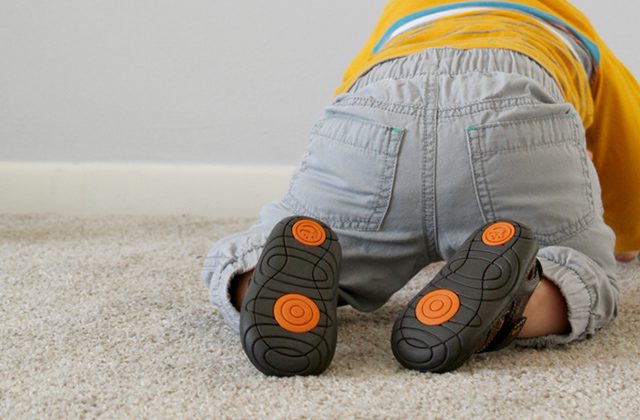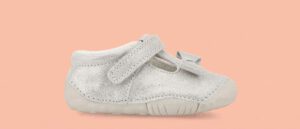
by Opator | May 23, 2024 | amazon, Blogs, Ecommerce, Kitchen, Office Furniture, Uncategorized
Having a well-equipped kitchen is not only about having state-of-the-art appliances and utensils. Many concern the utensils with which you shape the essence of any meal in the kitchen. But when your utensils are tumbling out of drawers and the pots and pans pile to the ceiling in the cabinets, where do you start? Worry not, for this guide will reveal the tools your kitchen cannot afford to be without, and your kitchen, as well as your guests, will thank you for it.
Kitchens and Chopping Boards
Chef’s Knife: The undisputed master of kitchen appliances. A good chef’s knife will make quick and easy work of cutting everything from vegetables to pieces of meat. Use a good sharpening steel and take care of it – a good knife can become a family heirloom.
Paring Knife: A knife that is smaller and more specialized than the previous one, used particularly for slicing fruits and vegetables. Because of its small size, it is easy to handle and perform precision work for garnishing or slicing food.
Serrated Knife: Great for cutting through the hard crust of bread and the soft skin of tomatoes without damaging them. The sharp teeth are capable of cutting through different materials with precision and come with a non-stick coated blade that guarantees smooth slicing.
Chopping Boards: Incorporate new sets of boards specifically for handling raw meat and fresh produce to avoid cross-contamination. While wooden boards hark back to the traditional kitchen, high-end plastic ones are easy to wash and carry, and will not require sharpening of your knives frequently. They also recommend color-coding your boards if you want to enhance security measures.
Bowls and Spoons
Mixing Bowls: A set of nesting stainless steel bowls in various sizes is incredibly handy for whipping cream, mixing salads, or marinating something. Choose bowls with flat bases for steady standing and pour lips to make pouring easier and less likely to spill.
Measuring Cups and Spoons: Precision is well valued in baking and cooking processes. That is why having accurate measuring cups and spoons will guarantee the best outcome every time. Search for nesting sets to facilitate storage and engraved markings to facilitate identification in the long run.
Whisk: Crucial for folding air into batters, making light and tender omelets, and stabilizing emulsions. A balloon whisk with thick wires is great for most situations, and a flat one is perfect for emulsifying sauces and deglazing pans.
Spatulas: A rubber spatula for scraping bowls clean and a metal spatula for flipping delicate foods. Silicone spatulas are heat-resistant and general-purpose, while metal ones are stronger for heavy or extended use.
Tools for Every Job
Slotted Spoon: They are particularly suitable for lifting food from liquids, draining pasta, and skimming fat from broths. Slots enable the liquids to drain well, something that is so important when boiling spaghetti or making a clean, tasty soup.
Tongs: Ideal for barbecuing, browning, and taking hot foods. When choosing tongs, opt for those with longer handles for safety purposes and those with locking mechanisms for storage.
Potato Masher: Quite useful in making fluffy mashed potatoes within a short time or even making perfect guacamole. A flat and strong masher helps to mash the food thoroughly without forming lumps.
Can Opener: Essential in any kitchen, select a simple and secure style. Electric can openers allow one to choose between convenience and manual openers with comfortable grips and smooth movement for safety.
Vegetable Peeler: Convenient for working with peels of potatoes, carrots, and other vegetables. Y-shaped peelers are suitable for various veggies, whereas swivel blade peelers reduce wastage.
A Kitchen That Will Inspire and Astound
Not only do these basic tools make food preparation quicker and more efficient, but they also enhance the efficiency of your kitchen. Think of a guest looking into your neat piles of order and seeing a polished chef’s knife and a set of stainless steel bowls. It tells a lot about how dedicated you are to the culinary craft, and that makes a big difference for them.
However, beauty is not the only consideration here. When you are equipped with the right tools, you won’t be afraid of preparing mouth-watering meals. It’s as if you actually start to look forward to it, and that sense of enthusiasm is incredibly inspiring. Think about cooking with friends – you will coordinate effortlessly and without distractions influencing those around you. The proper utensils and equipment empower a cooking confidence beyond the meal, making the kitchen environment a place of togetherness and satisfaction.
Therefore, having a well-equipped kitchen is not just a matter of the tools, but it also implies a certain approach. It voices the freedom to explore, to innovate, and to feed the people close to your heart. It’s an open invitation to sit down, to be heard, and to connect over something as basic and satisfying as food. Cooking becomes much easier and more efficient with these tools, and it is time to prepare your kitchen to be the creative zone! You should know that a good kitchen is not only about cooking; it is about building experiences that will be cherished for a long time after the last crumb has been tasted.

by Content Team | Jun 23, 2023 | amazon, Blogs, Child, Ecommerce, Footwear, Toy

Are your child’s first steps just beginning? This signals that it’s time to choose the appropriate footwear for your child from 51015kids. It can be difficult to choose shoes for a busy toddler, though. Are you unsure what to look for when purchasing your child’s first pair of shoes? Here are a few helpful hints.
When is the Right Time to Buy Shoes for Your Little One?
You will discover everything with us if you’re wondering when to get a child’s first pair of walking-appropriate shoes! Let’s start by noting that a child makes their first attempts to move independently while standing at around 12 months. This is a crucial developmental stage where shoes that are cozy and appropriately fitting for learning to walk are crucial. They allow your treasure to fully enjoy every new step, which is their fault. Keep in mind that every infant develops uniquely. Some infants begin to walk as early as 9 to 11 months, while others take longer.
When should you purchase your toddler’s first pair of walking shoes? Watch your child closely to start. Can you see that she has no trouble standing up and easily moving small distances? So, it’s time to pick out some footwear from 51015kids. This occurs typically between the ages of 9 and 14 months. Put on your child’s first pair of infant shoes that fit their feet, and while they are engaged in activities, determine if the model you selected is appropriate. The shoes fit appropriately if the youngster can move without trying to take them off.
Stepping Stones: Tips for Choosing the Best Shoes for Your Baby’s First Steps
Shoes for learning to walk can be found in stores in various styles. What distinguishes them from other shoe models? What characteristics ought the ideal infant walking shoes have? Consider several crucial factors when selecting them, such as:
- size,
- sole hardness,
- clasp,
- type of materials used.
Baby walking shoes or slippers should have several distinguishing characteristics. The shoes must be brand-new first. The first pair of shoes should be brand new and not from an older sibling because they mold to the child’s foot. The walking shoes from 51015kids are also flexible, light, and appropriately sized for the child’s foot (leave around 0.5 cm of room between the toes). Also, remember that the first pair of outdoor walking shoes, particularly in the autumn, ought to have a thin, waterproof sole.
The correct slippers for the infant to wear when moving around the house or going to the nursery should also be selected, in addition to shoes for the court. It is ideal for a baby’s first pair of shoes to be constructed of a delicate fabric that offers comfort, but you need to consider the shoes’ stability. The sole ought to be adaptable. It is also recommended to wear slippers with a leather insole and a cozy fastener that allows for adjustability.
Avoid These Pitfalls When Selecting Your First Walking Shoes
Remember a few key guidelines while trying to find a solution to how to choose shoes for a child. Never purchase infant shoes purely for aesthetic reasons. Of course, design is important, but it’s not the most crucial. If you solely focus on the outside aspect of the shoes, it can turn out that the model is too stiff or tight for your child, making the shoes entirely useless for walking.
Avoid wearing shoes with elevated, very hard soles. Due to these injuries, the child finds it challenging to walk and hold the proper posture. Additionally, internal, profiled inserts in the initial shoes are a foot deformer.
A baby that is one year old is just beginning to learn what shoes are and how to wear them. So remember that a baby’s first pair of shoes shouldn’t be overly bulky or large. Uncomfortable, mismatched shoes will deter a newborn from discovering the world rapidly. Rigid materials abrade children’s, particularly fragile skin. It’s also not a good idea to wear shoes with a very high upper because they make walking difficult!
How to Find the Perfect Pair of Shoes for Your Baby Girl?
Is your tiny princess acting more and more bravely while she moves about the house? She should wear comfy walking shoes. For females one and up, you can get interesting footwear. Put on lightweight 51015kids shoes that will also give your feet stability. You can slip, tie, or secure your shoes. Girls are drawn to design and color from an early age. When purchasing shoes for your young fashionista, look for pink or red styles that feature your favorite fairy tale characters.
How to Find the Perfect Pair of Shoes for Your Baby Boy?
Don’t you know what kind of walking shoes your son needs? You have many options, so you can easily pick warm shoes for walking and playing. When looking for a boy’s first pair of shoes, focus on styles with soft soles and those constructed of natural, breathable materials. Since the toddler runs a lot, his feet sweat more quickly. Choose 51015kids footwear with specific inserts that prevent perspiration. They’ll give the baby confidence and prevent chafing.
Does your kid frequently revert to crawling when standing independently because he still feels so insecure? The greatest option for him will be soft knit slippers. Or perhaps the youngster is beginning to freely travel further distances at home? Put your money on shoes with Velcro and a flexible sole. Such shoes help to stabilize the legs and ease movement.










